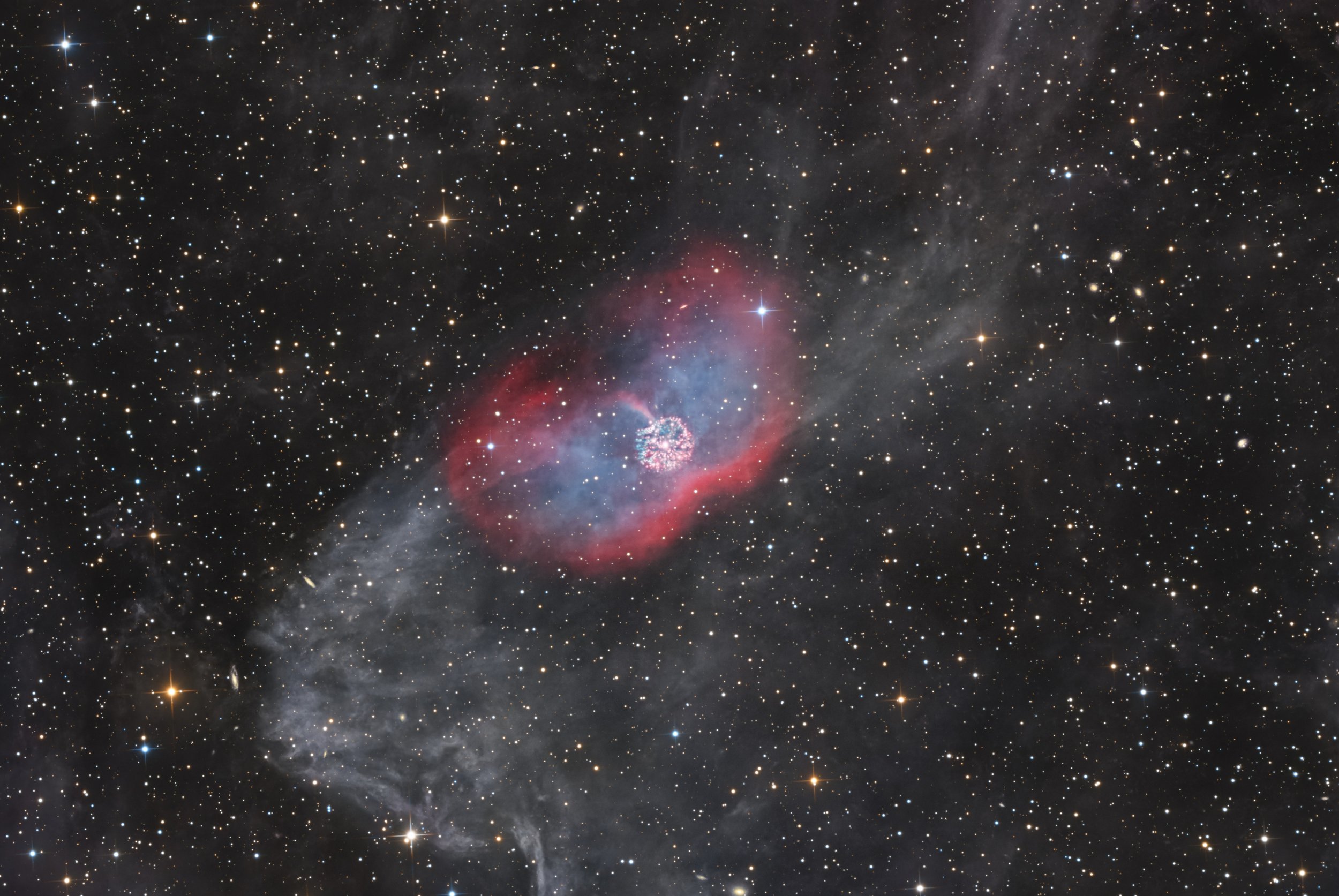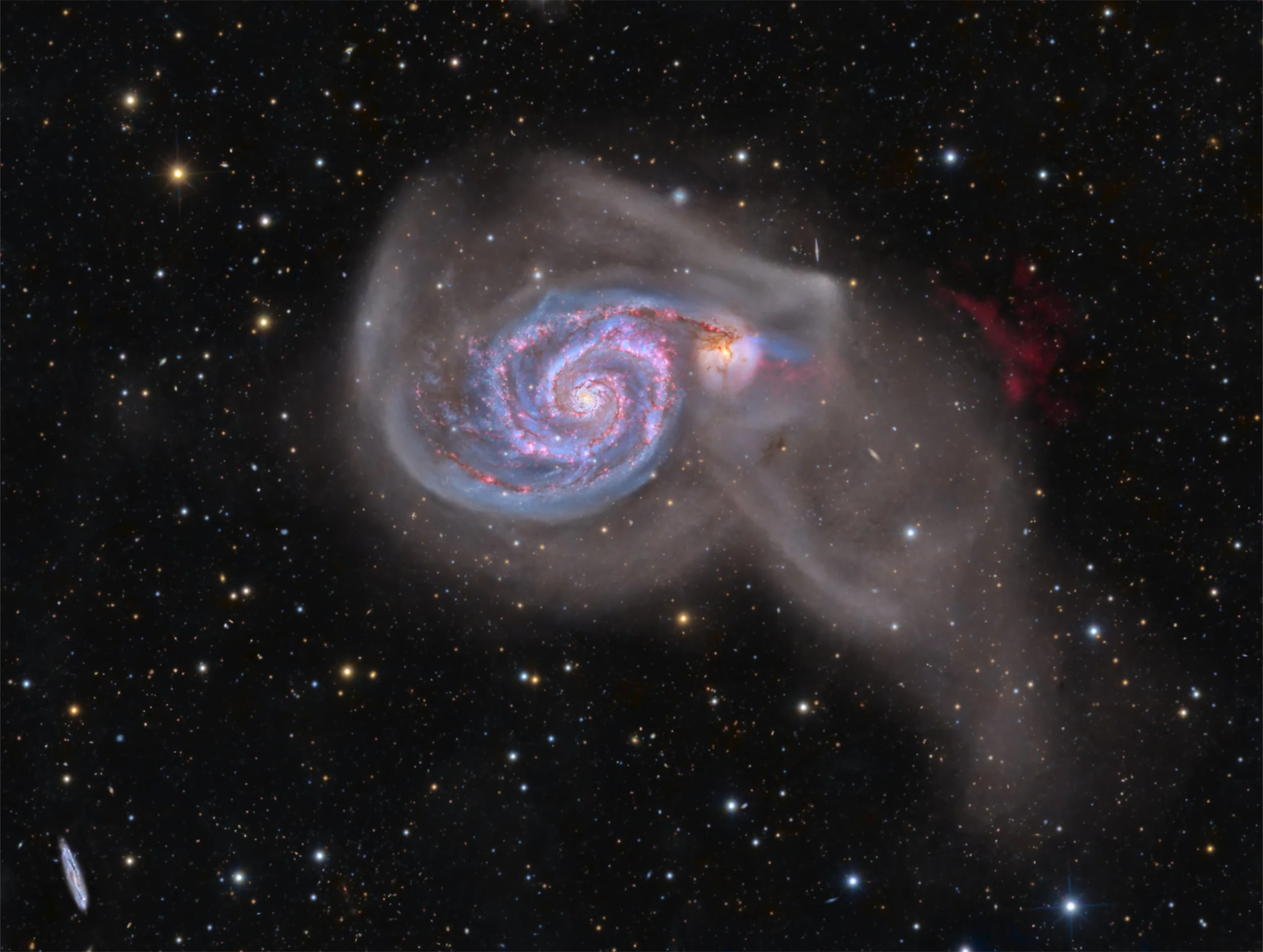
AAPOD2 Image Archives
Sort 2025 By Month: January | February | March | April | May | June | July | August | September | October | November | December
DSC – SNR G156.2+5.7 - The aftermath of a Star's Death
Supernova Remnant G156.2+5.7 (SNR G156.2+5.7), also known as SNR156, is an intriguing and relatively faint supernova remnant located in the constellation Camelopardalis. This remnant, spanning roughly 90 light-years in diameter, is a testament to the explosive death of a massive star, which occurred thousands of years ago. Its delicate filamentary structures are composed primarily of ionized hydrogen and other gases, which emit light as they interact with the surrounding interstellar medium.
SNR G156.2+5.7 is particularly notable for its relatively low surface brightness, making it a challenging target for observation. Studies of SNR156 have provided valuable insights into the dynamics of supernova remnants, including the mechanisms of shockwave propagation and the subsequent heating and ionization of interstellar material. Its discovery and subsequent analysis highlight the importance of advanced imaging techniques in unveiling the hidden details of such faint astronomical objects.
A deep dive into GK Persei's hidden planetary nebulae
GK Persei, also known as Nova Persei 1901, is a cataclysmic variable star system located in the constellation Perseus. This celestial object is famous for its historical outburst in 1901 when it briefly became one of the brightest stars in the sky. The remnants of this event include a fascinating planetary nebula, shrouded in the surrounding interstellar material.
This remarkable image of GK Persei's hidden planetary nebula showcases the intricate details of its structure, achieved through an unprecedented integration time of 265 hours. This extensive observation period, the longest ever conducted on GK Persei, has unveiled the subtle nuances of the nebula's morphology, highlighting intricate filaments and regions of ionized gas.
Unveiling hidden features in M51 using 255hours
In a mesmerizing display of cosmic interaction, the Whirlpool Galaxy, also known as M51, unveiled its spiraling arms and intricate features in a stunning astronomical photo that resulted from a 255-Hour Collaboration! This captivating galaxy, located in the constellation Canes Venatici, stood as a prime example of a grand design spiral, with its graceful arms adorned by bright knots of star formation. The exquisite interaction between M51 and its smaller companion galaxy, NGC 5195, was showcased in this image, demonstrating the profound influence of gravitational forces in shaping the evolution of galaxies. The intricate details of M51's structure offered a window into the marvels of galactic dynamics, inviting us to contemplate the vast and ever-evolving tapestry of the universe.




